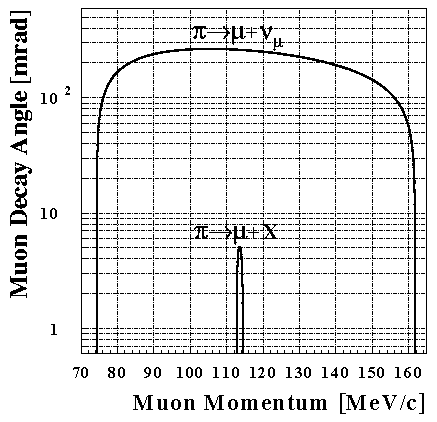



According to ref.[1], and taking into account
the ISIS beam structure, the mean time-of-flight (TOF) for the hypothetical
X-particles over a distance of 17.5 m is
(3.39 ± 0.25) ms.
This together with the pion and muon masses [6]
corresponds to a mass of the X-particle of
mX = (33.905 ± 0.001) MeV,
mp - m m = (33.91157 ± 0.00067) MeV.

Figure 1: Pion decay-in-flight kinematics for pp = 150 MeV/c, showing the difference in available phase space for decay (1) and (2).
An example of the pion decay kinematics in flight for a pion momentum pp = 150 MeV/c is shown in Fig.1. The momentum for a muon from decay (1) lies between (112.7-114.2) MeV/c and has decay angles up to 5.1 mrad, whereas a muon from decay (2) has momenta between (74-162) MeV/c with decay angles reaching 260 mrad. Thus, in the momentum region of interest for decay (1) the muons from both types of decay are separated in decay angle by at least 255 mrad, and should therefore be separable from the beam-optics point-of-view.
 Created by
J. Koglin on October-15-1999.
Created by
J. Koglin on October-15-1999.